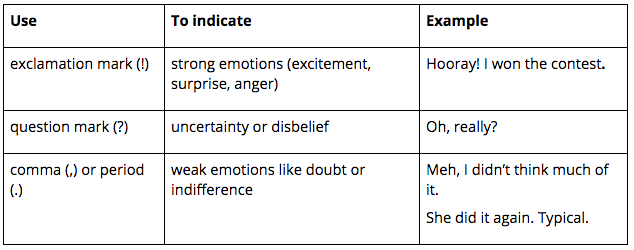Break These Three Writing Rules
Episode #8 of the course Conversational writing: Engage your readers by Gay Merrill
So far in this course, you’ve broken some formal writing rules to become conversational. You’ve learned to add contractions, use broken and one-word sentences, and include ellipses and em dashes.
Today’s lesson covers three more writing rules you can break:
1. Don’t begin a sentence with a conjunction.
2. Don’t end a sentence with a preposition.
3. Avoid interjections.
To use conversational writing, follow these rules instead.
Rule #1: Begin a Sentence with a Conjunction
Formal writing follows conventions such as never starting a sentence with a conjunction, which is a joining word like “and.”
But you can break this rule.
You can start a sentence with one of the FANBOYS, which is a mnemonic for the words “for,” “and,” “nor,” “but,” “or,” “yet,” or “so.” These words are also known as coordinating conjunctions.
Starting a sentence with a coordinating conjunction can make it short and easy to read. Use these joining words to carry a thought from one sentence to the next.
Examples:
• Luke rushed to catch his flight on time. But he forgot his passport.
• She enjoys walking. Yet she struggles to get to the gym.
• I like long walks in nature. And I enjoy time at my computer.
Note: When using the FANBOYS, keep these points in mind:
• Make sure the coordinating conjunction (and, or, but, etc.) is following by an independent clause, which is a sentence that has a subject and a verb.
• Don’t use a comma after the coordinating conjunction.
• Use coordinating conjunctions to help your writing flow. But don’t use them to start every sentence.
Rule #2: End a Sentence with a Preposition
A preposition (words like “on,” “in,” or “after”) shows the relationship between a noun or pronoun (I, you, they, it, etc.) and other words in a sentence.
In formal writing, the placement of the preposition can seem awkward.
Instead, you can end a sentence with a preposition, provided it makes sense.
Notice the placement of the preposition in the following examples:
Which sentence sounds more conversational?
a. Which blog did you publish your article in?
b. In which blog did you publish your article?
Answer: Sentence (a), which ends with the preposition “in.”
Which sentence would you choose?
a. With which of your friends are you going to the show?
b. Which of your friends are you going to the show with?
Answer: Sentence (b) sounds more conversational.
Rule #3: Use Interjections (Sparingly)
We use interjections, words that convey emotion, in everyday communication.
An interjection can be a single word like duh, yahoo, yuck, hallelujah, whoa, or yep. Or it can be a short statement like, “High five,” or, “That bombed.”
The interjection provides feeling about the information in a sentence.
Examples:
• Yikes! That squirrel nearly got run over by a car.
• My favorite singer lost the competition. Boohoo.
• No matter how hard she tried, she couldn’t resist the temptation. Sigh.
You can also emphasize the interjection with punctuation.

Note: Don’t overuse interjections or they’ll lose their effect.
Exercise
1. Write a sentence, and then follow it with a sentence that starts with one of the FANBOYS.
Refer to the examples under Rule #1: Begin a sentence with a conjunction.
2. Change the following sentence to move the preposition in bold to the end:
You can be proud of the conversational writing skills this course gives you.
We have to put out the recycling on Sunday night.
3. Add an interjection before or after each of these sentences:
• The weatherman predicted 45-degree heat for the weekend.
• After six months on the job, Marcia got a promotion.
• The next Star Wars movie comes out this year.
The writing technique in Lesson 9 is a great way to help your reader connect with you.
Have fun writing,
Gay
Recommended reading
What Is a Coordinating Conjunction?
Share with friends

